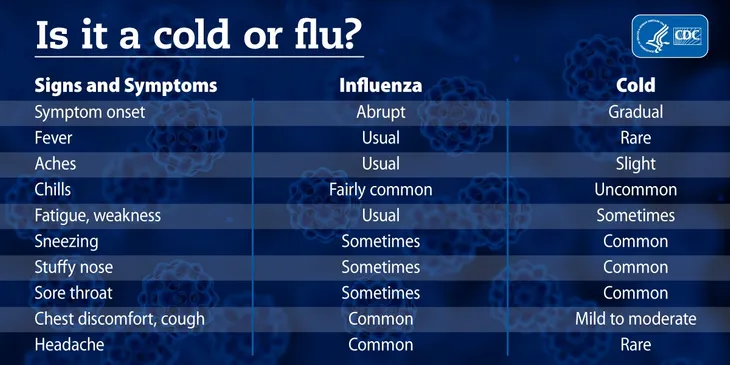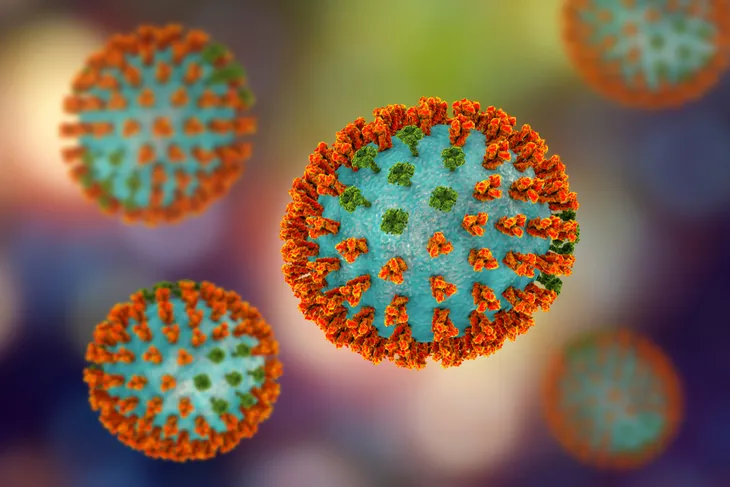The current flu season has been especially tough – and has made headlines, as several fatalities have resulted from it (more than 80-deaths of children have already been blamed on influenza this season beginning in October 2017, according to the CDC).
Meanwhile, the number of hospitalizations from the flu has also risen, causing more concern than usual about why it’s happening. Let’s take a closer look at 12 flu facts for the 2017/2018 season, and hopefully clear up any rumors that are floating in the air like the virus itself…
Dominant Strain is Dominating Headlines
This year, the flu strain H3N2 has been in the spotlight quite often. According to VeryWell Health, is a subtype of influenza A, one of the two major types that cause classic symptoms in humans (type C is markedly less severe).
This is not the first time H3N2 has reared its ugly head, as there were three flu seasons from 2003 to 2013 that were dominated by this strain and caused higher mortality rates, notes the source.
It’s Not Actually a Pandemic
Some media outlets have attached a “pandemic” label to the current outbreak of H3N2, but it’s not actually the case, according to an article from the Washington Post.
While the flu season has reached “pandemic levels,” it’s not “technically” a pandemic, it adds. Pandemics are when there’s a new strain that people haven’t been previously exposed to, and although the H3N2 is particularly nasty (and driving up death rates), it’s not the first time it has made an appearance, explains the Post.
What About The Flu Shot?
Some years the flu shot is more effective than others, as it’s a bit of an educated guess from the medical community about which strains will dominate and what the vaccine will protect against.
Time.com explains that flu vaccines are typically made with inactivated flu viruses incubated in chicken eggs. Unfortunately, the H3N2 virus doesn’t thrive well in the egg. “When replicating inside eggs, H3N2 viruses are prone to undergoing adaptive changes that make them better-suited to the egg environment, but less likely to prompt the right response in humans,” notes the source. Because of this, the flu shot is only about 30-percent effective this season.
What Are The Current Vaccine Options?
According to the Centers for Disease Control and Prevention (CDC), the nasal spray flu vaccine is out for the 2017/18 season, and only injections are recommended. This season, a “quadrivalent recombinant flu vaccine” called Flublok Quadrivalent is available (that protects against 4-viruses), it adds.
Meanwhile, the CDC also notes Flulaval Quadrivalent is now available for children 6-months and older, rather than 3-years and older. The trivalent version (protecting against 3-strains) of the vaccine from Afluria is now recommended for people 5-years and older, down from 9-years and up. Meanwhile, “for the first time,” a cell-grown H3N2 vaccine “reference virus” was used to produce the H3N2 component of the Flucelvax shot, it adds.
No, Vaccines Aren’t Causing Deaths
While the vaccine is markedly less effective against this year’s dominant strain, it’s not actually killing people, as some “news” outlets have been claiming while linking it to a source from the CDC.
In fact, the circulating claims about the dangers of getting a flu shot prompted the fact-checking website Snopes.com to follow up on it. Snopes says the CDC still urges people to get the flu shot, regardless of the unfounded claims being made by some media outlets that it’s actually the culprit behind the deaths.
The Flu Can Kill You
Unlike the vaccine, the active flu virus in your system can lead to death, especially if you’re in a vulnerable population. The CDC says most people should recover from flu symptoms in less than 2-weeks, but it’s a different story for others.
It warns of possible serious complications caused by infections of the nasal passages, throat and lungs – and that young children, those over 65, pregnant women, and those with existing chronic conditions are at especially high risk for these complications and can end up in the hospital. The flu complications can also lead to death, it adds.
Not Too Late to Protect Yourself
While it’s always best to get your flu shot before flu season arrives to give it the best chance of staving off illness, officials this year are saying you can still provide yourself some protection even though we’re well into February.
Health.com posted a story recently that says getting the flu shot, even late in the season, is a good idea. Even though the shot is only at about 30-percent effectiveness against the H3N2 strain, it sure beats 0-percent. Also, the flu season can actually last until May, adds the source.
Who is at Most Risk?
Like other seasons, the flu virus can hit certain groups harder than others. WebMD says that for the current season, parents should keep a closer eye on any symptoms in their children.
Aside from young kids, others at risk of complications from the flu this season include the elderly, pregnant women, and anyone who has a “chronic medical condition,” it adds. Health care workers are also at particular risk this season. Complications can include pneumonia and other serious ailments, it adds.
Kids and the Flu
There are some telltale signs to help you get medical attention for your kids a little quicker if they develop the flu this season. Vox.com explains the symptoms of the flu can come on quickly – meaning your seemingly healthy child can fall ill within 24-hours.
Symptoms typically will present as fever, headache, muscle pain, coughs, chills, or a sore throat, it adds. Your child may also feel sick to their stomach or vomit. Children under 5-years or who have certain medical conditions (such as asthma or kidney/liver disorders) should get checked by a doctor as soon as possible, notes the source.
What are the Signs of H3N2?
The CDC says although the H3N2 strain is nasty, there aren’t actually any symptoms that differ from flu viruses in other years – although each person may have different symptoms.
The symptoms are pretty much the same for any age group, and can include fevers, chills, cough, sore throat, runny/stuffy nose, muscle aches, headaches, fatigue, and vomiting, explains the CDC. In younger children, they may not be able to communicate all the symptoms until they appear visibly ill.
 Centers for Disease Control and Prevention
Centers for Disease Control and PreventionTreatments for the Flu
Treatment will vary depending on your age and health profile, as well as how long you’ve had the illness, according to VeryWell.com. That’s why it’s always best to see a doctor when symptoms first appear.
Doctors may prescribe you an antiviral medication (Tamiflu or Relenza) that can shorten the length of time you’re out of commission, explains the source. However, these antivirals are most effective if taken within 48-hours of your first cough or other sign of influenza. Antibiotics are not effective against the flu virus. You can also try a home remedy for some relief.
What’s The Outlook for Next Season’s Vaccine?
A Feb. 15 statement from the Food and Drug Administration (FDA) says information collected from an expert panel (along with other data) will help to select strains to target for next flu season. “Although some factors are beyond our control, such as the ability of the flu virus to change rapidly as it circulates, there are steps that we can take to ensure that the seasonal influenza vaccine protects as many individuals as possible,” it notes.
One of the focuses is how the flu vaccines are developed, as the FDA acknowledges that cell-based vaccines have proven to be more effective than egg-grown vaccines so far this season. Research about this finding by scientists from the FDA, CDC and NIH may lead to a more effective H3N2 vaccine for next season, it adds.














